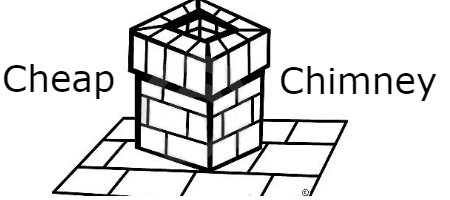Do I Need to Insulate My Chimney Liner?
Posted by Jim Hessenauer on
We get this question a lot. Is chimney liner insulation necessary? Personally for us we almost always recommend a pre-insulated chimney liner if conditions allow. The pre-insulated version saves a ton of time and hassle over wrapping the liner. Plus the outer steel helps to protect and preserve the insulation, not just during installation but for the life of the product. With that said, insulated chimney liners are not necessary most of the time, but in our opinion more is better when dealing with fire.
Forever Flex Top Sealer Plates seal so tightly, they virtually prevent the flow of air up the flue around the outside of the liner. This creates "dead air insulation" around the liner, and in most installations in code-approved chimneys, no further insulation is needed. There are some instances, however, when additional insulation is recommended or even required.
A) Safety Code Requirements
The Code Spec for chimney liners is UL 1777. To maintain its listing to the UL 1777 Standard, additional insulation must be added to your Forever Flex Liner installation if any of these four things are true:
1) You are venting through an air-cooled metal chimney (the type used for manufactured zero-clearance fireplaces).
2) Your existing masonry chimney is unlined, partially lined, or has a liner with open cracks in it. This is the biggest factor for insulating regardless. Many times after a cursory inspection of the chimney the existing liner appears fine, but it doesn't take much creosote built up in the missed cracks to cause a problem.
3) A 1" airspace has not been maintained between the existing masonry liner and the outer chimney structure.
4) A 1" airspace has not been maintained between the outer masonry chimney structure and surrounding combustibles.
B) To Ensure Optimum Chimney Performance
There are times when additional insulation is a good idea even when it is not required by code. When it comes to chimneys, you want the exhaust to stay as warm as possible on it's way up the chimney stack. Beyond 25 feet the height of the stack starts to incrementally affect exhaust temp. In order to ensure that flue temperatures will be warm enough to create adequate draft for optimum stove performance insulation saves the day. You might consider insulating your liner if either of these two things are true:
1) There will be more than 4" airspace between the liner and the chimney flue.
2) One or more of the chimney walls is exposed to outdoor temperatures for its entire length.
If you decide to insulate your liner, the best way to do it is with our Super Wrap insulation kit. Unlike typical ceramic blanket insulation, Super Wrap doesn't cause skin or lung irritation, and is not classified as carcinogenic. Super Wrap is foil-backed, only 1/2" thick, light weight and extremely easy to install.
